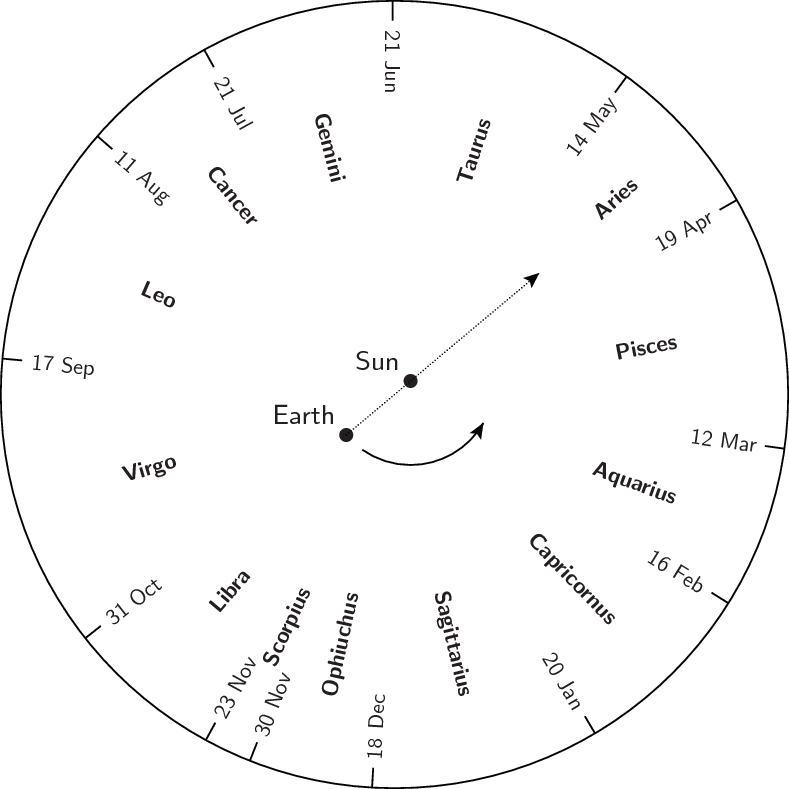Ecliptic

The ecliptic is the path that the Sun follows through the constellations each year as the Earth's seasons change, also known as the zodiac.
As the Earth orbits the Sun, a hypothetical observer on the Sun would see the Earth trace a single circuit around the sky each year relative to the stars behind it. An observer on the Earth, looking back in the opposite direction, likewise sees the Sun appear to track a single circuit around the night sky each year.
The exact times when the Sun passes from one constellation into the next can vary by a few hours from one year to the next, occurring roughly six hours later each year before shifting back in the fourth year when a leap day is inserted into the calendar.
The table below lists the dates when the Sun passed through each constellation along its path in the year 2010. This is a suitably 'average' year, since it was the midpoint between two leap years.
| Entry Date | Exit Date | Constellation |
| 20th January | 15th February | Capricornus |
| 16th February | 11th March | Aquarius |
| 12th March | 18th April | Pisces |
| 19th April | 13th May | Aries |
| 14th May | 21st June | Taurus |
| 22nd June | 20th July | Gemini |
| 21st July | 10th August | Cancer |
| 11th August | 16th September | Leo |
| 17th September | 31st October | Virgo |
| 1st November | 23rd November | Libra |
| 24th November | 29th November | Scorpius |
| 30th November | 17th December | Ophiuchus |
| 18th December | 19th January | Sagittarius |
Differences from the ancient zodiac
In astrological calendars, the Sun is said to pass through the twelve signs of the zodiac on dates which are around a month earlier than those given above. These dates are the ones usually used to work out star signs.
Around 2000 years ago, these dates matched up with the actual position of the Sun on any given day, but over the centuries they have grown out of date, for two reasons.
Firstly, the definitions of the boundaries of the constellations have changed. Nowadays, astronomers use standardised definitions of the constellations, which were agreed by the International Astronomical Union in 1922. Not only have the sizes and shapes of the constellations changed over the centuries, but many have also been divided into smaller pieces. Nowadays, the Sun's path passes through an additional thirteenth constellation – Ophiuchus, the serpent-bearer – in addition to the traditional twelve constellations of the zodiac.
More importantly, an effect called the precession of the equinoxes means that the Earth's the rotation axis slowly changes over time. Although the north pole currently points towards the pole star, Polaris, in Roman times it was closer to the star Kochab, and in 12,000 years time, it will be close to the star Vega.
The Sun's path across through the constellations is invariant over millions of years, but as the north pole moves, so too do the positions of the solstices and equinoxes along the line of the zodiac.
Thus, although the Sun passes through the same constellations now as it did thousands of years ago, the days of the year (which are tied to the Earth's seasons) when it passes through each constellation have changed.